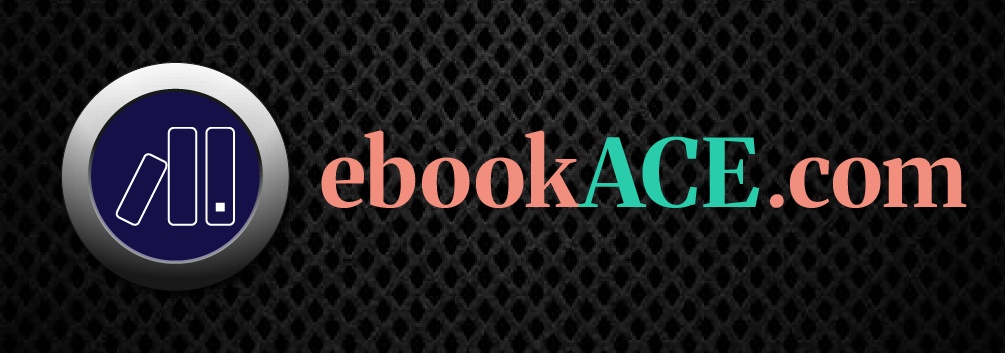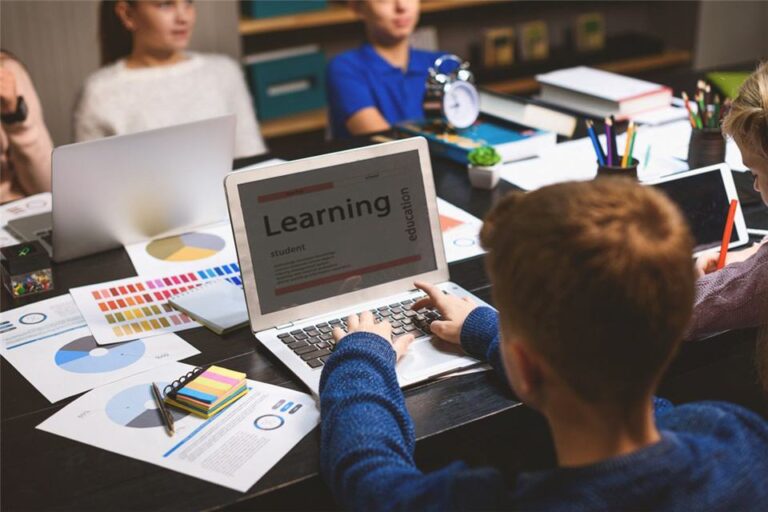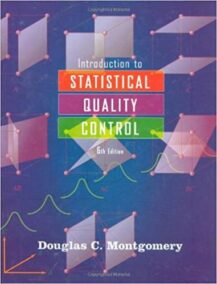Every human resource decision, whether it be hiring people with the necessary capabilities, offering training to advance knowledge and skills, or rewarding excellent work, is made with the goal of optimizing performance in the workplace. Understanding the skills and knowledge required for efficient performance is the foundation for wise human resource decisions.
Historically, intelligence has been used to describe the capacity for effective environmental adaptation and experience-based learning. However, there are differing opinions on the definition of intelligence and the best way to assess it. According to the conventional wisdom, general intelligence (or g) is the primary determinant of many of the talents required for success. G is examined as a construct at the top of a hierarchy of ability constructions and occasionally as a stand-alone construct. Since general cognitive capacity (g) is widely recognized as a reliable indicator of learning and success in a wide range of occupations, many people believe it to be the best single criterion for choosing candidates. It is by far the most extensively researched personnel choice predictor. Furthermore, according to some studies, g measurement might be the most useful selection method for locating people who can continuously learn in and adjust to uncertain and changing circumstances.
According to Schmidt and Hunter (source: https://www.frontiersin.org/journals/psychology/articles/10.3389/fpsyg.2019.02227/), of all the predictors, g has the most obvious meaning and the greatest theoretical underpinning.
However, other academics contend that there is a lack of consensus about the psychological measures of intelligence tests and the psychological meaning of g.
There are a number of justifications for taking into account variables other than g that affect job performance. First, g is not the only factor that determines performance, even though it could be significant for many occupations. According to validity estimates for general mental ability (also known as intelligence or general cognitive ability), g explains 20% to 25% of performance variance, leaving between 75% and 80% unexplained (after attenuation and range restriction are taken into consideration). Second, people’s everyday difficulties are different from the kinds of challenges for which intelligence is usually measured. As a result, intelligence tests might not accurately determine a person’s job-related skills. Third, it has long been believed that intelligence is a very stable characteristic that predicts performance quite consistently across time and across domains. However, there is growing evidence that talents are somewhat changeable and that performance changes depending on the circumstance. Lastly, a lot of individuals, both academics and laypeople, concur that intelligent performance encompasses more than just what can be determined by a typical IQ test.
Indeed, newer theories offer more expansive definitions of intelligence that encompass elements like emotional intelligence, creative and practical intelligence, and interpersonal intelligence.
These more expansive definitions of intelligence acknowledge that people differ in their strengths, which may not be discernible using conventional methods of intelligence testing. One such strategy is practical intelligence, which is the capacity to identify a better fit between the needs of the environment and the individual by adjusting to, altering, or choosing a new environment in order to achieve personally meaningful objectives. It is a supplement to academic intelligence or “book smarts” and can be described as “street smarts” or “common sense.” The skills necessary to succeed in daily life, including at work, are included in practical intelligence.
The relationship between practical intelligence and tacit knowledge (TK) is the first topic we cover in this article. After that, we go into how tacit knowledge is conceptualized and how practical intelligence and tacit knowledge are measured. We then present research on the relationship between tacit knowledge and performance, general cognitive capacity, and experience. Further results about tacit knowledge are also presented. We conclude by discussing our findings on principles and tacit knowledge.
PRACTICAL INTELLIGENCE AND TACIT KNOWLEDGE
We have approached the study of practical intelligence from a knowledge-based perspective. People use a wide range of information, some gained via formal instruction and some from personal experience, to solve practical challenges. One may describe a large portion of the information involved in effective problem solving as tacit. People must learn this information through their own experiences because it is difficult and frequently not publicly articulated. Furthermore, people may struggle to express what they know, even when their actions may reflect their understanding. This conceptualization aligns with expert knowledge research.
In order to address issues in their fields, experts rely on an extensive body of information. This knowledge typically functions outside of focal awareness and is procedural, meaning it involves a series of processes involved in carrying out an action. Additionally, it more accurately captures the situation’s structure than formal, disciplinary knowledge does.
The phrase “tacit knowledge” has been used to describe knowledge derived from everyday experience that has an implicit, hard-to-describe aspect. Its origins can be found in works on organizational behavior, ecological psychology, and philosophy of science. As people credit successful performance to professional intuition or instinct and learning by doing, these ideas about the tacit quality of the information connected with everyday problem solving are also mirrored in the common vocabulary of the workplace.
We have considered tacit knowledge to be a component of practical intelligence that allows people to choose, adjust to, and influence their real-world surroundings. The practical ability to learn from experience and use that information to pursue personally meaningful goals is reflected in this knowledge. According to our research, tacit knowledge is important for comprehending good performance across a range of fields. First, we describe how we conceptualize TK, how we measure it, and other practical intelligence metrics.
CONCEPTUALIZING TACIT KNOWLEDGE
Three key characteristics are used to define tacit knowledge. These characteristics align with the circumstances surrounding the acquisition, mental representation, and application of tacit knowledge.
First, in most cases, tacit information is learned without much assistance from outside sources, including direct instruction or formal training (source: https://en.wikipedia.org/wiki/Tacit_knowledge). Selective encoding (separating pertinent information from irrelevant information in the environment), selective combination (combining information into a meaningful interpretation), and selective comparison (relating new information to existing knowledge) are some of the processes that are facilitated when knowledge acquisition of various kinds is supported, according to Sternberg. It is more likely that some people will not learn the material if these processes are not adequately supported, which is frequently the case when learning from real-world experiences. Furthermore, despite its significance for practical success, tacit information frequently goes unacknowledged, underemphasized, and inadequately communicated because its acquisition is typically not supported.
Second, procedural knowledge about how to behave in certain situations or groups of situations is known as tacit knowledge. However, people may find it challenging to express the information that directs their actions, as is the case with a lot of procedural knowledge. We consider tacit knowledge to be a subset of procedural knowledge, based on the differentiation between declarative and procedural knowledge (source: https://www.researchgate.net/publication/220064194_Tacit_Knowledge_Conceptualizations_and_Operationalizations). Put otherwise, not all procedural knowledge is tacit, but we do regard all TK to be procedural.
When people’s tacit knowledge is exposed, usually by closely examining general action statements or rules, it is frequently expressed as intricate, multi-condition rules (production systems) for achieving objectives (e.g., rules about how to judge people accurately for a variety of purposes and under a variety of circumstances). Condition-action pairs allow for the mental representation of these intricate laws.
To put it another way, tacit knowledge is more than just a collection of impersonal norms. It is information relevant to a certain scenario or set of situations regarding what to do. In the real world, tacit knowledge can be even more specific and contextualized than in this case.
The third feature of tacit knowledge is that it is useful when applied. Knowledge that is action-oriented and based on experience will probably be more helpful in reaching one’s objectives than knowledge that is based on the experience of others or that does not outline a course of action. For instance, leaders may receive training on the best leadership style (e.g., participative or authoritarian) for a particular circumstance, but they may discover through personal experience that another style works better.
It should be made clear when discussing tacit knowledge that it is not the same as job knowledge. Instead, we see the two as notions that overlap. Declarative and procedural knowledge are both included in job knowledge; only a small portion of procedural knowledge can be classified as tacit. Once more, TK is a part of procedural knowledge that is not easily or publicly expressed but is utilized to address real-world, practical issues.
MEASURING TACIT KNOWLEDGE
Rather than just asking people to tell us what their tacit knowledge is, we rely on observable evidence of its existence because people frequently struggle to express it. In other words, we gauge TK based on how people react to real-world scenarios or issues, especially where tacit knowledge is anticipated to be advantageous. Situational judgment tests (SJTs), as defined in the literature, are measurement tools used to evaluate tacit knowledge that usually comprise a sequence of scenarios and related response alternatives. These assessments, of which tacit-knowledge tests are a subset, are typically used to gauge behavioral intentions or interpersonal and problem-solving abilities. Each question in a situational-judgment or tacit-knowledge test poses a problem that is pertinent to the area of interest (for example, a manager stepping in to resolve a conflict between two subordinates), and then it offers a number of solutions (i.e., strategies) for resolving the issue, such as meeting with each subordinate separately to hear their opinions on the issue or meeting with both subordinates to hear their complaints. On a Likert scale, respondents are asked to rank the appropriateness or quality of a number of possible answers to the scenario, or they are asked to select the best and worst possibilities from a small list.
Finding significant workplace situations is necessary for the creation of tacit-knowledge assessments. By asking people, usually subject-matter experts who have been nominated for their exceptional level of skill, to give examples of effective and ineffective behaviors on the job, critical incidents—situation-specific behaviors associated with effective or ineffective performance—are identified. Naturally, there is no assurance that the individuals selected will be perfect or even outstanding. The outcomes of empirical evaluations will, of course, contradict our hypotheses to the extent that they are poorly selected, as the tests are likely to have poorer validity when compared to job performance. Nonetheless, the critical-incident technique has been effectively applied in the development of a number of performance assessment instruments, such as SJTs and behaviorally anchored rating scales (BARSs).
The events that were selected for TK tests are those in which people gained valuable knowledge about how to carry out their work and for which the best answer was not something they had been instructed to do or had read in a manual. To put it another way, scenarios selected for TK testing are those in which understanding precise procedural rules has not always led to the best answer. Since it is based on what experts think truly works, the optimum answer as decided by them may even go against formal, explicit knowledge. Naturally, tacit-knowledge examinations assess a person’s knowledge rather than their actions. Not everyone acts on what they know. For instance, a principal may be aware of dubious methods to win over a superintendent, but they may decide not to pursue what they perceive to be dubious strategies.
One of three methods has been used to score implicit-knowledge tests: (a) comparing participant ratings to a group membership index (expert, intermediate, or novice); (b) assessing how closely participant responses adhere to professional standards; or (c) calculating a profile match or difference score between participant ratings and an expert prototype. Academic psychologists, salespeople, college students, civilian managers, and military leaders have all been studied using TK tests.
Some readers might find it strange that we have based our rating on expert opinions rather than “right” and “wrong” responses. However, bosses at work assess employees’ performance, and they may make subjective judgments. The “right” and “wrong” replies are not used to measure performance. Therefore, compared to traditional scoring, our system is more representative of workplace appraisal.
OTHER MEASURES OF PRACTICAL INTELLIGENCE
TK tests are not the only attempts to gauge practical skills. Simulations and other SJTs are used in an effort to simulate real-world problem-solving skills. In simulations, individuals are observed in scenarios designed to mimic elements of the real job. These simulations’ answers are thought to be an approximation of the real ones. In-basket exams, situational interviews, and group talks at assessment centers are some examples of simulations. Simulations are also used in situational judgment assessments. The distinction between high-fidelity and low-fidelity simulations was made by Motowidlo et al. (source: https://www.researchgate.net/publication/232551810_An_Alternative_Selection_Procedure_The_Low-Fidelity_Simulation). Respondents are given stimuli that closely mimic the real scenario in high-fidelity simulations, giving them the chance to react as though they were under those conditions. Low-fidelity simulations involve presenting the stimuli verbally or in writing, asking participants to explain their reactions to the scenario rather than performing the behavior.
The assessment center, which gives small groups of people a range of activities, such as simulated interviews, simulated group discussions, and in-basket tests, is a high-fidelity testing method. One benefit of the simulation approach is that it more accurately simulates real-world job performance. It’s not always evident, though, whether components of the job should be simulated or how performance should be assessed. Any test that aims to maximize ecological validity is affected by this issue.
The fidelity of in-basket tests is moderate. An in-basket exam asks the participant to reply to a variety of items, such as letters, financial reports, and memos. The person has some of the limitations of a real-world work scenario since they have a limited amount of time to address the issues raised in the in-basket. Performance is assessed based on how the items are handled and prioritized. For instance, a participant receives a positive evaluation if they swiftly reply to a letter from the Director of Finance asking for financial records for the fourth quarter.
SJTs are at the low-fidelity end of the spectrum. They provide written descriptions of problematic circumstances, as was previously indicated. The critical incident analysis-selected descriptions can be created to describe or resemble real-life events in the relevant field (e.g., a salesperson making a phone solicitation).
Once more, a series of problem-solving techniques are presented after each description. Respondents are asked to evaluate the efficacy of each option or to select the best and perhaps the worst of a few tactics. SJTs have historically been graded according to the percentage of experts who support the option or by assigning points for correctly selecting the best and worst options.
ESSENTIAL FINDINGS
By definition, experience solving real-world, everyday problems is the main source of tacit knowledge. The adage “experience is the best teacher” captures the idea that experience offers chances to acquire critical performance-related knowledge and abilities.
Tactic knowledge often increases with experience, according to research (source: https://www.sciencedirect.com/science/article/abs/pii/S1041608009000491). We discovered a strong relationship between a manager’s position within the organization and tacit knowledge. Also, business managers, business graduate students, and ordinary undergraduates all had different tacit-knowledge scores, with managers showing the highest results.
We studied undergraduate psychology students, psychology graduate students, and psychology professors and found similar results for a TK test for academic psychologists.
Tacit knowledge is positively connected with the number of firms a manager had worked for, but adversely correlated with the number of years a management had been with the current organization. The more successful managers left for other companies, which could be one reason. We discovered a substantial correlation between salespeople’s TK test scores and the number of years they had been in sales. This could be because effective leaders were promoted more quickly than less successful leaders.
According to later studies, leaders at higher levels of command demonstrated more tacit knowledge than those at lower ranks since TK scores were connected with leadership position.
Therefore, the association between experience and tacit knowledge is typically supported by the research that has been done thus far. Although tacit information has some foundation in experience, the correlations are often moderate, indicating that experience and tacit knowledge are not entirely associated.
TACIT KNOWLEDGE AND GENERAL COGNITIVE ABILITY
Once more, many believe that the best predictor of work performance is general cognitive ability (source: https://www.researchgate.net/publication/374760793_The_validity_of_general_cognitive_ability_predicting_job-specific_performance_is_stable_across_different_levels_of_job_experience). The direct impact of g on learning job-related information is mostly responsible for the correlation between g and performance. However, a lot of job-knowledge assessments are developed to evaluate declarative knowledge of facts and regulations. They frequently include well-defined, abstract questions that are comparable to those on conventional intelligence tests. This helps to explain, at least in part, the correlations that have been observed between cognitive ability tests and job knowledge measures. However, the issues with implicit-knowledge assessments are context-specific and poorly characterized. We believe that practical intelligence, not general intelligence, determines performance on these examinations.
TK tests showed negligible to moderate associations with measures of g in the studies covered here. In undergraduate samples, the results of TK exams for managers and academic psychologists showed a nonsignificant correlation with a verbal thinking test. An IQ test for a sample of business leaders showed no significant link with the results of a TK test for managers. A test of tacit knowledge for sales in samples of salespeople and undergraduates produced similar results. According to one study (source: https://www.sciencedirect.com/science/article/abs/pii/S0160289601000654), TK scores actually had a negative correlation with g test scores, indicating that in some settings, academic talents may be neglected in favor of practical skills. Artists, musicians, sportsmen, and craftspeople may determine that abilities other than those taught in school are more valuable to them.
Verbal thinking ability and TK scores showed minor and nonsignificant to moderate and significant associations. The argument that TK tests measure skills different from those evaluated by conventional intelligence tests is supported by the evidence discussed above. TK tests assess something distinct from g, according to another research, which we address below.
TACIT KNOWLEDGE AND PERFORMANCE
Job knowledge assessments have been found to link to performance pretty regularly, though not flawlessly. As previously mentioned, a large portion of this prediction is explained by the connection between general cognitive aptitude tests and occupational knowledge. To put it another way, those with high g are supposed to learn more and perform better as a result. Performance is also anticipated to be predicted by implicit knowledge assessments. In other words, people who take the valuable lessons from experience are more likely to succeed. However, as tacit knowledge is a type of practical intelligence, it should be able to explain performance elements that g tests are unable to account for.
Tests of implicit knowledge have been linked to performance in a variety of areas. These criteria include the number of publications, grades in school, salary, performance-appraisal ratings, the rated prestige of the business or institution, and the adjustment to college. We now go over a few of these results in greater depth.
There is evidence that TK explains performance in other domains, despite the fact that business managers have been the focus of a large portion of this research. It was discovered that college students’ scores on a TK test correlated with measures of their academic achievement and college adjustment.
The increasing validity of TK tests over conventional intelligence tests in predicting performance was demonstrated in two additional studies involving military and corporate executives. In other words, the studies tackled the issue of whether TK assessments are more valuable than conventional intelligence tests. Beyond results on tests of general verbal intelligence and tacit knowledge for managers, TK scores more significantly explained the minor variation in leadership effectiveness. These studies demonstrate that performance variance that is not explained by conventional assessments of academic, abstract intelligence can be explained by tacit knowledge.
The link between practical intelligence and performance has also been supported by other researchers who have used TK tests or comparable metrics (source: https://www1.udel.edu/educ/gottfredson/reprints/2003dissecting.pdf). Whereas verbal reasoning and psychometric scores did not significantly predict an indication of managerial skill, scores on the TKIM did. During a mock interview, undergraduate students were given a Situational Judgement Test. In a number of work-related scenarios, the students were asked to choose the answer they would most likely or least likely provide. Employers’ assessments of the interviewee’s qualifications were found to be significantly predicted by practical intelligence. Additionally, they discovered a moderately significant association between the practical-intelligence test scores and a general intelligence measure. Last but not least, we discovered that practical intelligence predicted both peer and supervisory judgments of performance using an SJT created especially for entry-level professionals in a federal investigative agency. Moreover, g failed to account for the impact of practical intelligence. Therefore, there is mounting evidence that TK and related tests evaluate a component of performance, practical intelligence, that is not captured by measures of general intelligence, in addition to explaining individual disparities in performance. Our knowledge of practical intelligence is further improved by a few more discoveries about tacit knowledge.
ADDITIONAL FINDINGS REGARDING TACIT KNOWLEDGE
First, we looked at how TK and personality are related. Personality tests are thought to be different from implicit knowledge. TK scores generally showed nonsignificant correlations with a number of personality-type tests administered to a sample of business executives (source: https://www.researchgate.net/publication/2440923_Measuring_Formalising_and_Modelling_Tacit_Knowledge). TK scores consistently explained a considerable increase in variance over personality traits in hierarchical regression analyses.
Second, tests of what is commonly referred to as general ability do not exhibit the general factor that tacit-knowledge measures do, which tends to intercorrelate and exhibit a general factor among themselves.
Third, it has been discovered that, in at least one case, measures of tacit knowledge produce comparable outcomes across cultural boundaries.
Fourth, while group differences in scores as a function of gender and race are frequently observed in traditional intelligence tests (source: https://www.tandfonline.com/doi/full/10.1080/09515089.2019.1697803), TK tests may be less vulnerable to these differences because they do not only measure skills learned in school. Nonsignificant correlations between tacit knowledge and both race and gender showed that majority and minority group members, as well as men and females, performed similarly on the TK test.
Lastly, tacit knowledge acquisition can be quantified, but not directly. Instead, researchers and practitioners use performance metrics, behavioral proxies, elicitation techniques, and modeling frameworks to translate invisible, experiential know-how into measurable outcomes. Quantification is always partial and contextual, but it allows organizations and researchers to evaluate learning, improve training, and make better use of hidden expertise.
These results imply that encouraging people to selectively encode and selectively combine information can improve tacit knowledge acquisition. To learn more about the mechanisms behind the formation and acquisition of tacit knowledge, more investigation is required. By instructing and receiving feedback, students gain knowledge about teaching. One line of inquiry might focus on ways to make it easier for people to learn tacit information when preparing for a job.
Overall, research to date has shown that tacit knowledge tends to grow with experience, that it is different from personality traits and general intelligence, that TK tests predict performance across multiple domains and beyond general intelligence tests, that TK test scores seem to be similar across racial and gender groups, that practical intelligence may have a significant degree of generality different from psychometric g, and that TK acquisition can be determined. The significance of taking practical intelligence into account while trying to comprehend the skills required for success in the actual world is further supported by these findings. To predict work performance, traditional ability tests can—and perhaps should—be supplemented by tests of implicit knowledge.
TACIT KNOWLEDGE IN EDUCATION
Education is a multifaceted process that goes beyond the mere transmission of factual knowledge. While explicit knowledge—knowledge that can be codified, written, and systematically taught—is essential, it represents only part of the learning experience. Equally crucial, yet often overlooked, is tacit knowledge, a form of knowledge that is personal, context-specific, and difficult to formalize. Tacit knowledge encompasses insights, intuitions, experiences, and skills that individuals accumulate over time but cannot easily express in words. In the context of education, understanding and leveraging tacit knowledge is fundamental to creating effective learning environments, enhancing teaching practices, and fostering lifelong learning.
The concept of tacit knowledge was popularized by Michael Polanyi, a Hungarian-British scientist and philosopher, in his seminal work The Tacit Dimension. Polanyi famously stated, “We know more than we can tell.” This phrase captures the essence of tacit knowledge: it is knowledge that resides in the minds of individuals, often revealed through action, intuition, or skill, rather than through formal articulation.
In education, tacit knowledge manifests in both teaching and learning processes. Recognizing its role is essential for fostering holistic educational experiences. Teachers possess a vast reservoir of tacit knowledge, often referred to as professional craft knowledge. This knowledge shapes classroom practices, instructional strategies, and interactions with students.
Students also develop tacit knowledge that complements explicit knowledge. This type of knowledge influences how they approach problem-solving, interact with peers, and internalize concepts.
Understanding the distinction between tacit and explicit knowledge is vital for educators aiming to enhance teaching and learning. While explicit knowledge is formal, structured, and easily communicated — such as textbooks and manuals — tacit knowledge is informal, experiential, and often unconscious.
Both forms of knowledge are interdependent. For instance, explicit knowledge can provide foundational understanding, while tacit knowledge enables students and teachers to apply this understanding effectively in real-world contexts.
Despite its intangible nature, tacit knowledge can be identified, nurtured, and shared through specific strategies. Observing experienced teachers in action allows novices to internalize tacit skills such as classroom management, instructional pacing, and student engagement techniques. Shadowing provides contextual learning that textbooks cannot offer.
Mentorship programs facilitate the transfer of tacit knowledge by pairing experienced educators with newcomers. Through modeling, feedback, and collaborative reflection, mentees gain insights that are otherwise difficult to codify. Encouraging teachers and students to reflect on their experiences helps make tacit knowledge more explicit. Journals, portfolios, and self-assessment tools can capture insights that may otherwise remain subconscious. Group discussions, peer review, and cooperative projects allow learners to exchange tacit knowledge. Sharing experiences, strategies, and intuitions fosters collective learning that enriches individual understanding. Narratives about classroom experiences, problem-solving incidents, and instructional challenges convey tacit knowledge effectively. Storytelling contextualizes abstract principles, making them accessible and memorable.
Recognizing tacit knowledge in education has significant implications for curriculum design and pedagogical practices. Curricula that incorporate hands-on, practical experiences, such as labs, workshops, simulations, and internships, provide opportunities for students to develop tacit knowledge. Experiential learning emphasizes “learning by doing” (source:https://www.wgu.edu/blog/experiential-learning-theory2006.html) which bridges the gap between theory and practice. Professional development programs should not focus solely on explicit knowledge but also on cultivating tacit skills. Training workshops, peer observations, reflective exercises, and mentoring programs can enhance teachers’ tacit competencies.
Tacit knowledge is continuously refined through experience. Educational systems that encourage reflection, adaptability, and self-directed learning help students and teachers develop lifelong learning skills, ensuring they can navigate complex and evolving contexts. Traditional assessments often prioritize explicit knowledge, such as factual recall and standardized tests. Incorporating assessments that capture tacit knowledge—such as portfolios, performance tasks, and peer evaluations—provides a more comprehensive evaluation of learning outcomes.
CONCLUSION
We think that work psychology researchers might be, on some level, keeping trying to answer—again and over again—a question that has already been addressed. A significant component of intelligence, general cognitive ability accurately predicts performance in almost every career. We don’t think anyone disagrees with this opinion, and it’s unclear what more can be achieved by more research.
Today’s problem is how psychologists might enhance the general ability prediction.
According to research, several measures offer both extra theoretical insights and a large incremental validity above the measurements of g. There is no need for a strong defense of g because work in the investigation and validation of such measurements does not threaten g theorists. The definition of g is still up for debate, although it is a good predictor of performance. It’s time to take on new challenges and add more practical tactics to our arsenal.
Tacit knowledge is a vital, though often underappreciated, component of education. It encompasses the intuition, experience, and practical know-how that both teachers and students bring to the learning process. While explicit knowledge provides the foundation for learning, tacit knowledge enables effective application, problem-solving, and adaptation to complex situations.
Recognizing, nurturing, and sharing tacit knowledge through mentorship, reflective practice, experiential learning, and collaborative strategies enhances teaching effectiveness, enriches student learning, and fosters lifelong learning skills. By integrating tacit knowledge into educational practices, institutions can create dynamic, context-sensitive, and holistic learning environments that prepare learners for the complexities of the real world.
Ultimately, education that values both explicit and tacit knowledge equips individuals not just with facts, but with the wisdom, skills, and judgment necessary to thrive in an ever-changing society. As Polanyi observed, the knowledge we cannot easily express is often the knowledge that makes the greatest difference.
Megan Wilson is a teacher, life strategist, successful entrepreneur, inspirational keynote speaker and founder of https://EbookACE.com. Megan champions a radical rethink of our school systems; she calls on educators to teach both intuition and logic to cultivate creativity and create bold thinkers.





